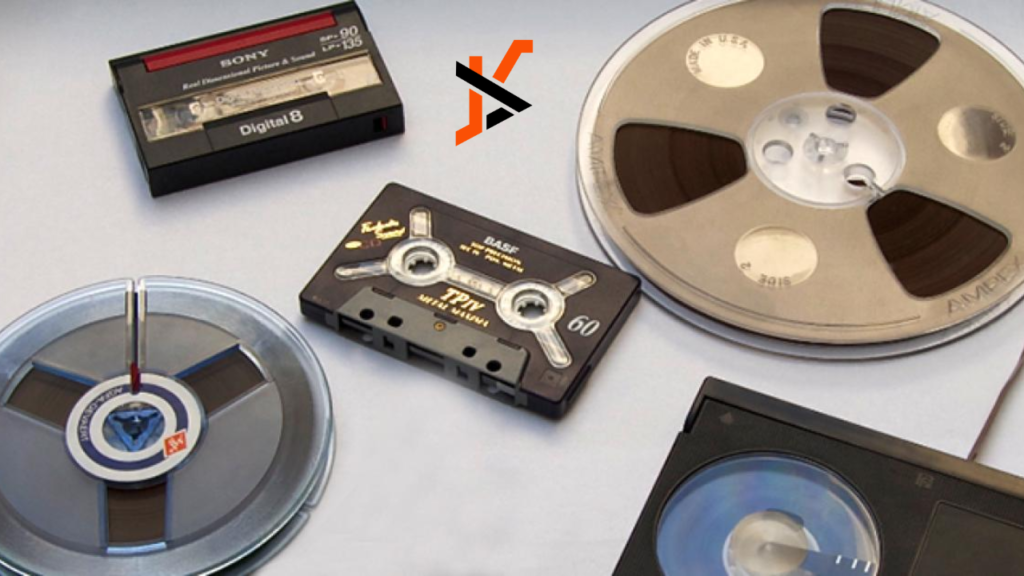In an era where digital preservation has become paramount for businesses and institutions alike, the importance of reliable data storage methodologies cannot be overstated. While modern storage solutions like cloud services and solid-state drives are gaining traction, it is important not to overlook the significance of traditional data storage methods, such as magnetic tape. Magnetic tape has been a critical medium for archiving valuable information due to its durability and cost-effectiveness. As such, tape data recovery plays a vital role in maintaining the integrity and accessibility of historical data collections.
The Role of Magnetic Tape in Digital Preservation
Magnetic tape technology, once the pinnacle of data storage, has reliably served industries for decades. Despite its less frequent use in day-to-day operations, it holds a treasure trove of historical data, spanning various fields including scientific research, financial records, and multimedia. Therefore, ensuring the proper maintenance and accessibility of tape-stored data is essential for organisations aiming to protect their digital legacy.
Digital preservation is not merely about keeping data; it’s about maintaining the capacity to retrieve and utilise information over time. This is where the practice of tape data recovery becomes indispensable. It provides a bridge between ageing storage media and modern data platforms, facilitating not just the conservation but also the active use of archived information.
The Challenges of Tape Data Recovery
As robust as magnetic tapes are, they are not immune to degradation. With time, physical deterioration, coupled with technological obsolescence, poses a substantial challenge to tape data retrieval. Tapes must be carefully handled and read using compatible devices that are becoming increasingly scarce. In addition, the expertise required to perform tape data recovery successfully is a resource that is less commonly found in today’s IT workforce.
Another challenge lies in the fact that tapes can contain data in outdated formats, which modern systems may not readily accept or understand. The successful extraction of this data necessitates a meticulous recovery process, along with potential data conversion or migration efforts to ensure compatibility with contemporary systems.
The Process of Tape Data Recovery
The process of restoring data from tapes requires a systematic approach. It begins with a thorough assessment of the physical condition of the tapes, which may involve cleaning and repairing the tape media if necessary. The next step involves reading the data using specialised equipment. Skilled technicians carefully extract the information, taking every precaution to prevent loss or corruption.
Some instances demand the recreation of the legacy environment in which the tapes were initially used. This could mean sourcing vintage hardware and software, a task that demands in-depth knowledge and experience with historical computing technologies. Following recovery, the material is often migrated to current storage solutions, completing the preservation cycle.
Ensuring Longevity Through Tape Data Recovery
One of the primary benefits of tape data recovery is the extension of data lifespan. By recovering and migrating the digital contents of tapes to new media, organisations secure ongoing access to their historical records. This is particularly vital for data with indefinite retention requirements, such as legal documents, scientific research data, and cultural heritage archives.
An effective tape recovery strategy also opens doors for data analytics and research possibilities by unlocking past datasets. The insights derived from historical data can be invaluable, providing context for future developments and innovations. Thus, through meticulous recovery processes, legacy tape-stored data continues to contribute to knowledge and technology growth.
Choosing the Right Tape Data Recovery Partner
Selecting the appropriate service provider for tape data recovery is pivotal. The provider must possess not just the technical capacity to perform data recovery but also a deep understanding of the intricacies of digital preservation. Considering the delicate nature of the process, it’s crucial to engage a partner with a proven track record, who prioritises data security throughout the recovery period.
A reputable recovery service will offer transparency about their methodology, ensuring that clients are informed of the processes and the condition of their assets at every step. They’ll also comply with industry standards and regulations, thereby ensuring the confidentiality and integrity of the data they handle.
Concluding Thoughts on Data Recovery from Tape
In conclusion, the significance of tape as a medium for long-term data storage remains substantial in the digital age. Tape data recovery is a nuanced and critical component of digital preservation strategies, one that ensures historical data is not lost to the ravages of time or technological progress. By recovering and revitalising archived information, organisations maintain continuity in their records, adhere to compliance requirements, and leverage their historical data assets to inform and enrich future ventures.
With proper planning, the implementation of rigorous recovery processes, and the collaboration with experienced data recovery specialists, the data from yesteryears’ tapes can successfully journey into the digital future. Indeed, harnessing the power of tape data recovery is more than a technical task; it is a commitment to the stewardship of our collective digital heritage.

